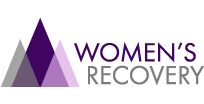Attention-deficit hyperactivity disorder (ADHD) is one of America’s most common mental health conditions. Roughly four in every five cases occur in American children. However, adults may also be affected.
ADHD is a complex disorder. Not everyone has the same symptoms or experiences its effects in the same way. Fortunately, an ADHD treatment program can help you recover regardless of your particular symptoms, even if you have other mental health or substance problems. If you’re looking for professional help in managing your ADHD symptoms, contact Women’s Recovery at 833.754.0554 for more information on our ADHD treatment program for women.
What Is the Definition of ADHD?
ADHD produces symptoms that fall into any one of three main categories:
- Hyperactivity – Problems with hyperactivity involve difficulty staying still, even in inappropriate situations.
- Impulsivity – Problems with impulsivity involve difficulty controlling behavior and not thinking before acting.
- Inattention – Problems with inattention involve difficulty in maintaining focus.
Hyperactivity and impulsivity tend to occur together. ADHD always begins in childhood, although some children may not be diagnosed. Most affected children no longer experience symptoms as adults.
No one knows what causes ADHD precisely. Still, several risk factors have been identified. Those factors include exposure to brain injury and the details of your genetic heritage. They also include having a mother who smoked, drank alcohol, or had highly stressful experiences while pregnant.
What Are the Different Types of ADHD Diagnosis Within Its Definition?
The ADHD definition includes multiple forms of the disorder. These types include:
- Combined ADHD – This is the most common type of ADHD, affecting around 60% to 70% of those who struggle with ADHD. This type is defined by the presence of symptoms from both the hyperactivity and impulsivity categories, as well as the inattention category. For example, someone with combined ADHD may be hyperactive and impulsive and have difficulty staying focused.
- Hyperactive or Impulsive ADHD – People with this type of ADHD have difficulty staying still and otherwise controlling their behavior. They may also have symptoms from the inattention category, although not as severe as those with combined ADHD.
- Inattentive ADHD – Also called attention deficit disorder (ADD), this type of ADHD is defined by problems with focus and sustaining attention. People with inattentive ADHD are not necessarily hyperactive or impulsive.
Children must have at least six symptoms that fall into one of these categories to be diagnosed. Older teens and adults only need five symptoms in any category to receive an ADHD diagnosis.
What Are the Symptoms and Signs of ADHD?
For people with the inattentive form of the disorder, potential ADHD signs include:
- Difficulty focusing on any given activity or task
- Lack of attention to detail when performing various tasks
- Being easily distractible
- Finding it hard to complete assignments or tasks
- A tendency to forget everyday duties or responsibilities
- Not seeming to pay attention to others when they speak
- Frequently losing things you need to meet your daily goals
- A notable dislike for doing things that require sustained focus
ADHD signs in the hyperactive or impulsive form of the disorder may include:
- Frequent fidgeting or squirming
- A drive to be constantly active
- Excessive talkativeness
- Difficulty staying seated
- Finding it hard to wait your turn for things
- Talking before other people can finish what they’re saying
- A more general tendency to intrude on others or interrupt them
- Climbing or running when such behavior isn’t appropriate
If you have combined ADHD, any inattentive, hyperactive, or impulsive symptom may affect you.
What Is the Definition of ADHD in Women?
The basic definition of ADHD in women is the same as in men. However, men are affected by the disorder more often than women.
Despite ADHD diagnoses being more prevalent in men, women are likelier to have inattentive ADHD than men. Regardless of gender, all adults with the disorder have the risk of developing additional problems, such as:
- Anxiety disorders
- Depression
- Substance abuse and addiction
When someone struggles with two mental health conditions, they have co-occurring disorders. This is called a dual diagnosis, and many treatment centers—including Women’s Recovery—offer a specific program to treat both conditions simultaneously.
Learn More About ADHD Treatment at Women’s Recovery
Are you sure you’ll be given an ADHD diagnosis, but the definition doesn’t seem to fit your symptoms? ADHD is a disorder that can produce inattention, hyperactivity, and impulsivity. However, there are subtypes of ADHD that may fit your case. And while the condition starts in childhood, you may still be affected as an adult. Women, in particular, tend to have ADHD symptoms related to inattention.
Do you need more information on ADHD? The mental health professionals and rehab specialists at Women’s Recovery can help. We specialize in ADHD treatment in the context of drug or alcohol problems. Our customized care can help you recover from this common combination of mental health issues. Call us today at 833.754.0554 for more information on our ADHD treatment and addiction treatment programs. You can also reach us through our online form.







